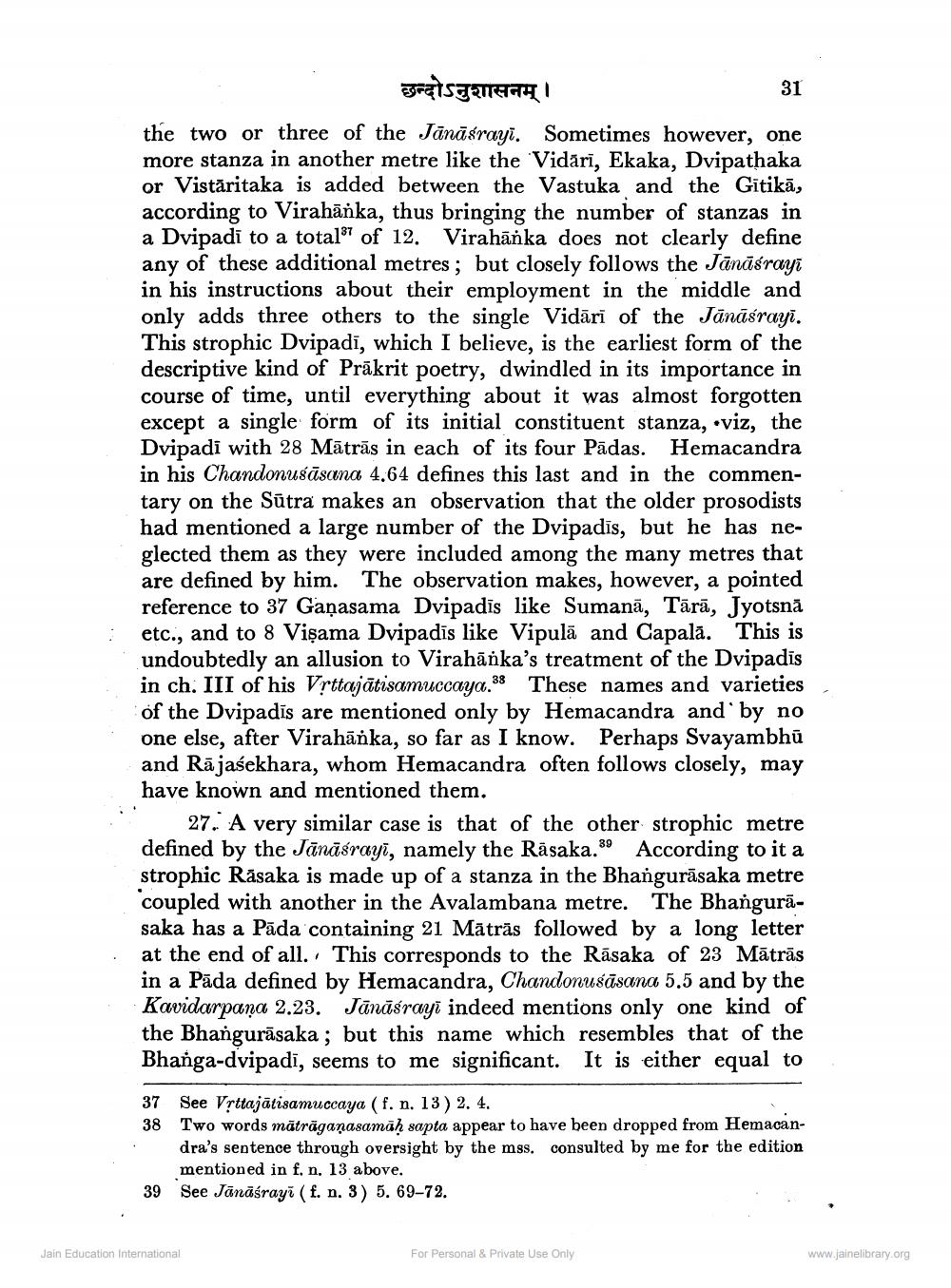________________
छन्दोऽनुशासनम् ।
the two or three of the Jānāsrayi. Sometimes however, one more stanza in another metre like the Vidārī, Ekaka, Dvipathaka or Vistăritaka is added between the Vastuka and the Gitikā, according to Virahānka, thus bringing the number of stanzas in a Dvipadi to a total of 12. Virahanka does not clearly define any of these additional metres; but closely follows the Janasrayi in his instructions about their employment in the middle and only adds three others to the single Vidari of the Jānāsrayi. This strophic Dvipadi, which I believe, is the earliest form of the descriptive kind of Prakrit poetry, dwindled in its importance in course of time, until everything about it was almost forgotten except a single form of its initial constituent stanza, viz, the Dvipadi with 28 Mātrās in each of its four Pādas. Hemacandra in his Chandonusāsana 4.64 defines this last and in the commentary on the Sūtra makes an observation that the older prosodists had mentioned a large number of the Dvipadīs, but he has neglected them as they were included among the many metres that are defined by him. The observation makes, however, a pointed reference to 37 Gaṇasama Dvipadīs like Sumanā, Tārā, Jyotsnā etc., and to 8 Viṣama Dvipadīs like Vipula and Capala. This is undoubtedly an allusion to Virahanka's treatment of the Dvipadis in ch. III of his Vṛttajatisamuccaya.38 These names and varieties of the Dvipadis are mentioned only by Hemacandra and by no one else, after Virahanka, so far as I know. Perhaps Svayambhu and Rajasekhara, whom Hemacandra often follows closely, may have known and mentioned them.
27. A very similar case is that of the other strophic metre defined by the Jānāśrayī, namely the Rasaka. According to it a strophic Rāsaka is made up of a stanza in the Bhangurāsaka metre coupled with another in the Avalambana metre. The Bhangurāsaka has a Pada containing 21 Matras followed by a long letter at the end of all. This corresponds to the Rasaka of 23 Mātrās in a Pada defined by Hemacandra, Chandonusāsana 5.5 and by the Kavidarpana 2.23. Janasrayi indeed mentions only one kind of the Bhangurāsaka; but this name which resembles that of the Bhanga-dvipadi, seems to me significant. It is either equal to
37 See Vṛttajatisamuccaya (f. n. 13) 2. 4.
38 Two words mātrāganasamāḥ sapta appear to have been dropped from Hemacandra's sentence through oversight by the mss. consulted by me for the edition mentioned in f. n. 13 above.
See Jānāśrayi (f. n. 3) 5. 69-72.
39
31
Jain Education International
For Personal & Private Use Only
www.jainelibrary.org




